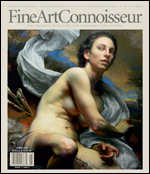The drama of the High Baroque was played out in large part on the ceilings of Italian churches. As with so many developments in the history of Art, it was Michelangelo who first opened the door to these ideas with his Sistine Chapel in Rome. What came to be called the High and Late Baroque was a style that pushed the limits of realism and invention toward theatrical displays of complex illusion.
The decoration of ceilings followed advances in architecture. From the earlier wooden lacunar ceilings to the vaults and domes erected during this period, painters, perspectivists and sculptors responded with inspired creativity, introducing a style that dominated much of Italy and adapted itself to local traditions throughout the rest of Europe.

















 Caput Mundi
Caput Mundi The Classicist
The Classicist Traditional Building Magazine
Traditional Building Magazine Pure Ornament
Pure Ornament Mural Guild
Mural Guild